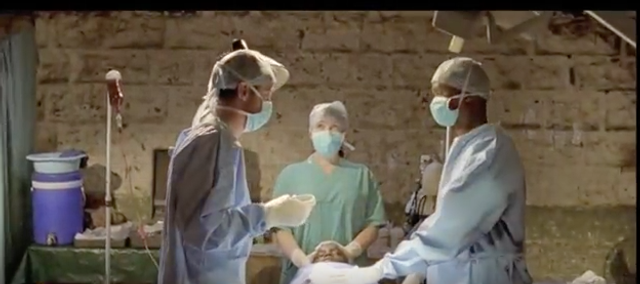Médecins sans Frontières (Doctors Without Borders): powerful storytelling without words
- Exhibited by
- Natalie Levin, Legacy Engagement Officer at The Guide Dogs for the Blind Association
- Added
- June 30, 2016
- Medium of Communication
- Television, Cinema
- Target Audience
- Individuals, public awareness
- Type of Charity
- Healthcare, international relief/development
- Country of Origin
- Denmark
- Date of first appearance
- 2009
SOFII’s view
This advertisement produced for television and cinema is an effective demonstration of powerful storytelling even though nobody speaks a word in it.
Background
I wanted to share with you this brilliant charity advert that I really wish I’d thought of: the advert, for Médecins sans Frontières. I only came across it recently, although it has been around for a little while, so apologies if some of you have seen it before. The first time I saw this was a bit of a light bulb moment for me, I couldn’t believe how powerful it was – this is definitely something I wish I’d thought of.
Merits
Why have I chosen this advert? The first time I saw it I was speechless, which isn’t something that happens to me a lot. I wanted to run around in I-have-to-share-this-with-everyone mode! The fact that this was my reaction is the reason I’m writing this for SOFII.
Even without any spoken words, the message that the advert conveys is incredibly powerful. In just one minute, it demonstrates very clearly the link between the individual’s donation and the impact that the donation allows the organisation to achieve.
The advert leads the viewer on an emotional journey, weaving together a sense of tension and urgency with the medical emergency whilst also demonstrating the real-life working conditions of the staff at the clinic.
The sound of the bank teller’s clickety-clack stamp (do they even exist anymore?) and the sound of the lights switching back on is particularly effective at underlining the importance of the donation. Viewers are left in no doubt that the boy will survive, thanks to the woman’s donation. This advert perfectly encapsulates the equation: donor + action = a change for good.
- No spoken words – but still powerful.
- Clear demonstration of the link between donation and impact.
- Emotive and emotional journey that engages the viewer.
- The sense that the donor ‘completes the work’.
How can we apply the idea to legacy fundraising?
Enabling supporters to visualise the impact of their legacy gift can sometimes be a struggle especially as the supporters, by the very nature of their gift, won’t be around to see the difference for themselves. Making a legacy gift is, for most people, an important decision. One that’s often seen as a decision made by the head – after all the will is usually drawn up in a staid solicitor’s office – and not necessarily by the heart.
As a result, charities are sometimes guilty of pandering to these perceptions by pushing out cognitive, rational content, which explains why a supporter should leave a gift instead of showing the amazing difference a gift could achieve. Legacy gifts, often running into the thousands of pounds (even millions for the lucky few), are transformational and allow substantial amounts of work to be achieved, thanks to those donors.
We, as charities, need to continue to move towards more emotive content, to share those stories that plant ideas, thoughts and emotions in the donor and to inspire the heart to make the decision to leave a gift. It should be obvious what they need to do and the head just doesn’t come into it.
This MSF advert has been around for a while, but it’s still a useful reminder to us today. That of sharing a simple story and showing our donors their direct link to the beneficiary. A gift is a gift, whether it’s received in this year’s income line or at some unknown time in the future. And people give to people. We as legacy fundraisers are simply the conduit for those gifts and it’s our responsibility to continue to connect our donors to the work that we do and to inspire them. Let’s make it a light bulb moment for them too.
- Show the difference the donor makes to the work, not why they should write a will.
- Legacy gifts are (most of the time) transformational amounts of money – think what could be achieved with that amount and share that with the donor.
- Donors want to give to people – show donors that they have a direct link to the beneficiary.
- Legacy fundraisers are dream-brokers.

Also in Categories
-
- Broadcast
















